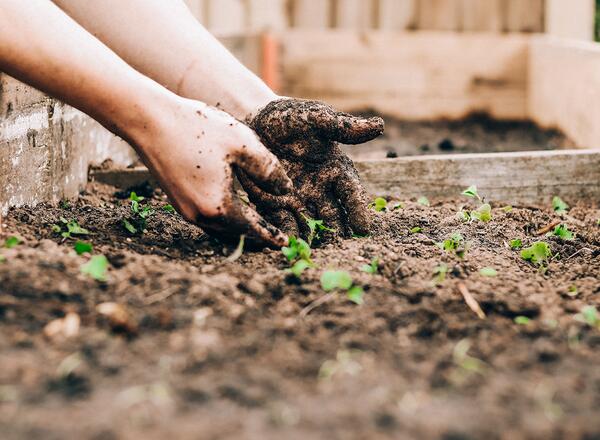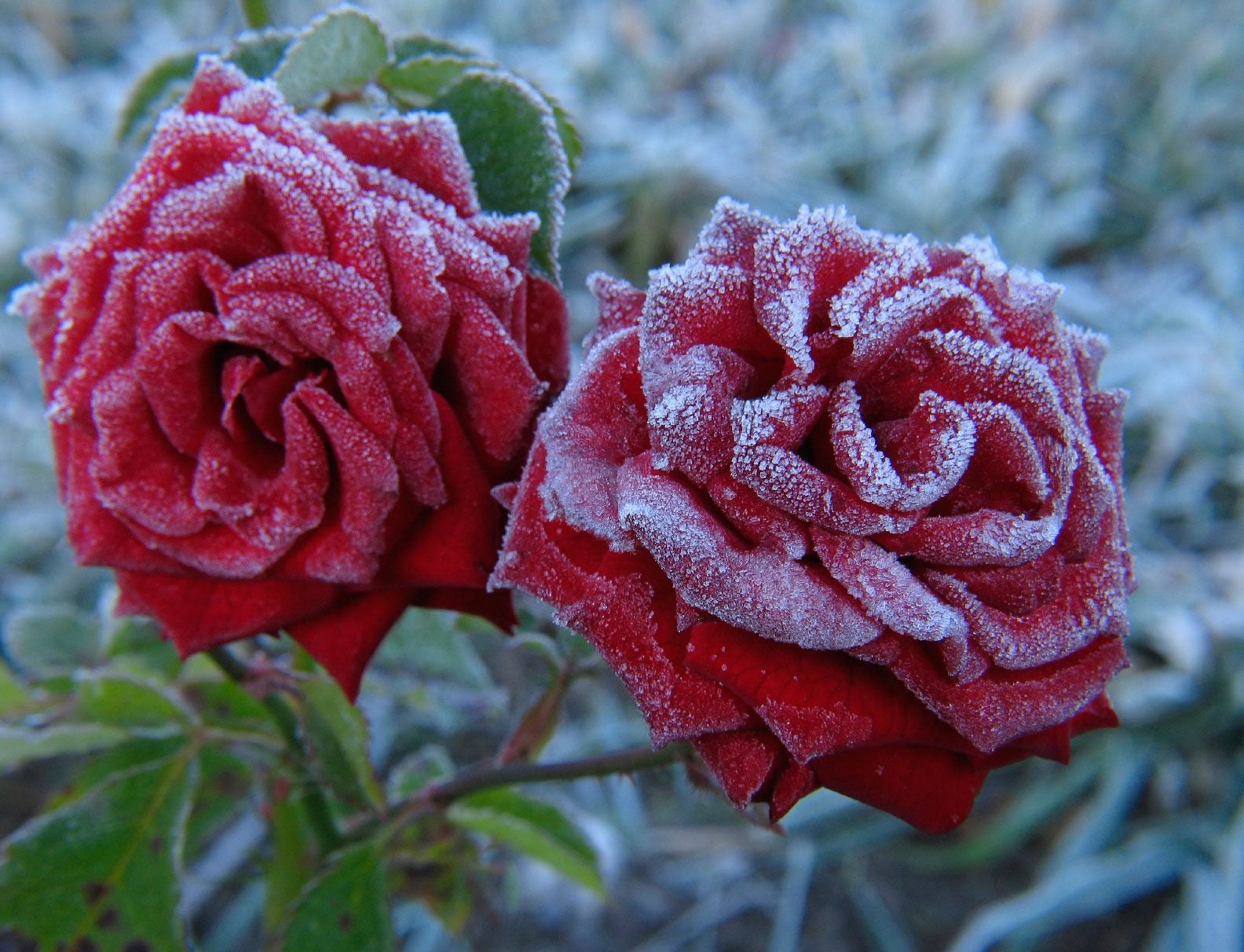How To Grow Roses Like A Pro In 2024
Growing roses doesn’t have to be difficult. Find out how to cultivate vibrant roses with these simple yet effective tips for planting, care, and pruning.
Nov 19, 2024124 Shares123.6K Views

Roses are often seen as the pinnacle of garden beauty, known for their vibrant blooms and intoxicating fragrance. While these flowers are admired for their elegance, growing them successfully requires more than just planting and watering.
Creating the right conditions and understanding how to nurture your roses are key factors that lead to a thriving garden full of color and life. With thoughtful preparation, you can transform your garden into a beautiful display of roses that not only stand out but also continue to bloom year after year.
In this article, you’ll learn the best practices for growing healthy roses, from selecting the ideal variety for your garden to mastering the essentials of soil preparation, watering, and pruning. By following these expert tips, you’ll be able to cultivate roses that flourish, providing you with blooms that bring both beauty and joy to your space.
Choosing The Right Rose Variety For Your Garden
Selecting the right rose variety is the first step toward a healthy, blooming rose garden. Roses come in many forms, each with unique characteristics. Your choice should depend on factors such as climate, space, and maintenance level.
- Hybrid Tea Roses: Known for their elegant, long-stemmed blooms, hybrid teas are perfect for cut flowers and formal gardens. These varieties typically need more care and are best suited for mild climates.
- Climbing Roses: These roses are ideal for covering walls, trellises, and arbors. Their abundant blooms and vigorous growth make them a striking choice for large gardens with vertical elements. They require some structural support but reward you with beautiful, cascading flowers.
- Shrub Roses: If you're looking for low-maintenance options, shrub roses are hardy and versatile. These varieties are disease-resistant and thrive in different climates, making them great for gardeners who want beautiful roses without high upkeep.
- Miniature Roses: Perfect for small spaces or containers, miniature roses offer compact growth with delicate blooms. They are ideal for balconies, patios, or indoor spaces with ample light.
For beginners, disease-resistant varietieslike Knock Out Roses are a great choice. These roses require less maintenance and are hardy in many environments, providing beautiful blooms without constant care.
Best Soil Preparation For Roses
Soil preparation is the cornerstone of healthy roses. Roses prefer well-drained, loamy soil, a balanced mix of sand, silt, and clay that retains moisture without becoming waterlogged. Proper soil preparation ensures that your roses have the nutrients and water they need to thrive.
- Loamy soil: Loamy soil provides the perfect balance of drainage and moisture retention. To improve your garden soil, mix it with compost or well-rotted manure. These organic amendments enrich the soil, improve its structure, and provide nutrients essential for root growth.
- Organic matter: Adding organic matter such as compost or mulch enhances the soil's ability to retain moisture and nutrients. Spread a 2–3-inch layer of compost over the soil before planting, and work it into the top 6-8 inches.
- Soil pH: Roses prefer slightly acidic soil with a pH between 6.0 and 6.5. To test your soil’s pH, use a home soil test kit. If your soil is too alkaline, add sulfur to lower the pH. Conversely, if it's too acidic, adding lime will raise the pH.
Adding gypsum to heavy clay soils can improve drainage and soil structure, while sandy soils benefit from additional organic matter to improve moisture retention.
How To Plant Roses
Planting roses at the right depth and in the right conditions sets the stage for healthy growth. Here's a detailed guide for planting both bare-root and potted roses:
Planting Bare-Root Roses:
- Soak the roots: Soak bare-root roses in water for 12-24 hours before planting to rehydrate the roots.
- Prepare the hole: Dig a hole wide and deep enough to accommodate the roots. The hole should be about 18 inches wide and 12 inches deep.
- Improve the soil: Mix compost or organic matter into the soil you removed to improve drainage and nutrient availability.
- Position the plant: Place the rose in the hole with the graft union (the knobby part where the stems meet the roots) just above soil level.
- Backfill and water: Backfill the hole with the enriched soil, gently firming it down. Water thoroughly to help the plant settle.
Planting Potted Roses:
- Prepare the root ball: Gently loosen the root ball and trim any circling roots to stimulate new growth.
- Dig the hole: The hole should be slightly larger than the container. Place the rose so that the soil level of the potted rose is level with the garden soil.
- Water and mulch: After planting, water deeply and add mulch to retain moisture.
When planting in a sunny spot, ensure your roses receive at least six hours of direct sunlight per day for optimal growth.
Watering And Feeding Roses
Watering and feeding roses properly are key to keeping them healthy and blooming.
- Watering: Roses prefer deep, infrequent watering. Water the base of the plant rather than the leaves to prevent fungal diseases. Ideally, water roses early in the morning to allow the foliage to dry quickly. Roses need about 1 inch of water per week, but this may vary depending on climate and soil conditions.
- Feeding: Roses are heavy feeders and need consistent nutrients throughout the growing season. Apply a balanced fertilizer (10-10-10) in early spring when new growth starts, and repeat every 4-6 weeks during the growing season. For organic feeding, compost tea or fish emulsion are excellent choices.
Epsom saltscan be added to the soil in spring to provide magnesium, promoting healthy leaf growth and improving flower quality.
Pruning Roses - When And How To Prune
Pruning encourages new growth, improves air circulation, and prevents disease. Proper pruning is essential for better blooms and overall plant health.
- When to prune: Prune roses in late winter or early spring, just before new growth begins. This allows you to shape the plant and remove dead or damaged wood.
- How to prune: Using clean, sharp pruning shears, cut at a 45-degree angle about ¼ inch above an outward-facing bud. Remove any crossing or crowded branches to promote better airflow and prevent disease.
- Pruning tips: For hybrid tea roses, prune hard (remove about 1/3 of the plant) to encourage large blooms. For climbing roses, focus on removing old canes and tying new canes to supports for better flowering.
After pruning, apply a layer of compost or mulch around the base to help retain moisture and provide slow-release nutrients.
Protecting Roses From Pests And Diseases
Roses are susceptible to pests and diseases, but proactive care can prevent or manage most issues.
- Aphids: These small insects can be controlled using insecticidal soap or by introducing natural predators like ladybugs.
- Black spot: This common fungal disease causes black spots on leaves. Prevent it by watering at the base of the plant and applying a fungicide when necessary.
- Powdery mildew: A white, powdery fungus that thrives in humid conditions. Ensure good air circulation and avoid watering the leaves to reduce the risk.
Neem oilis an effective organic solution to manage a variety of rose pests and diseases without harming beneficial insects.
Seasonal Care For Roses
Roses require different care depending on the season, ensuring they remain healthy and productive throughout the year. In spring, prune your roses and apply a balanced fertilizer to encourage strong growth. Mulch around the base to conserve moisture. During the summer months, deadhead spent blooms to promote new flowers and water deeply to prevent drought stress.
It’s also a good time to consider organic pest control for rosesto manage any pests without harming the environment or beneficial insects. As autumn approaches, reduce fertilization and prepare your roses for winter by adding extra mulch to insulate the roots. In colder climates, protecting your roses with burlap or additional mulch can prevent frost damage during winter.
Growing Roses In Containers - Best Practices
Growing roses in containers is ideal for those with limited space or poor garden soil. Here’s how to ensure success with container roses:
- Container size: Use a container at least 18 inches in diameter with good drainage holes.
- Soil mix: A loam-based compost mixed with organic matter provides the best environment for container roses. Ensure good drainage by adding pebbles or sand at the bottom.
- Watering and fertilizing: Container-grown roses dry out more quickly, so water them more frequently, and feed them with a balanced fertilizer every 4-6 weeks.
Consider using self-watering pots for roses to reduce the risk of under-watering during hot months.
FAQs
How Often Should I Water My Roses?
Roses should be watered deeply 2-3 times per week, depending on weather conditions and soil drainage.
What Is The Best Fertilizer For Roses?
A balanced fertilizer with equal parts nitrogen, phosphorus, and potassium works well. Organic fertilizers like compost tea or fish emulsion are also excellent options.
Can I Grow Roses In Partial Shade?
While roses prefer full sun, some varieties can tolerate partial shade, though they may produce fewer blooms.
How Do I Protect Roses From Frost?
In colder climates, protect roses by applying a thick layer of mulch around the base or wrapping the plants in burlap for insulation.
Conclusion
A flourishing rose garden doesn’t happen by chance, it’s the result of proper care and attention. By investing time in selecting the right varieties, preparing the soil, and maintaining a consistent watering and feeding schedule, you’ll create the perfect environment for your roses to thrive.
Every step, from planting to pruning, contributes to the long-lasting beauty of your garden. With the right techniques and care, your roses will reward you with continuous, stunning blooms that elevate your garden's overall aesthetic.
By nurturing your plants and addressing their needs through the seasons, you can enjoy the timeless elegance and fragrance of roses for many years to come.
Latest Articles
Popular Articles

